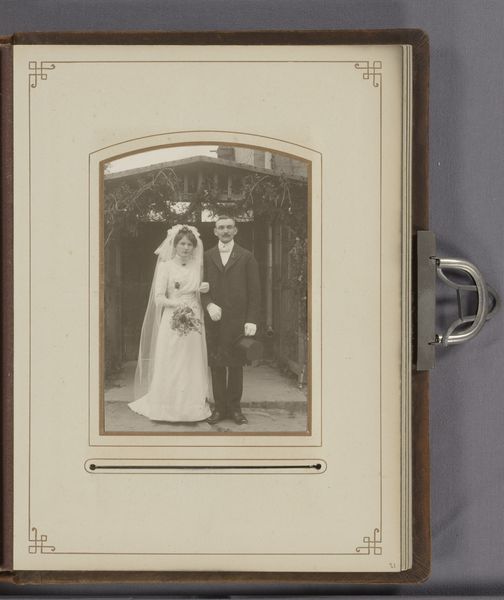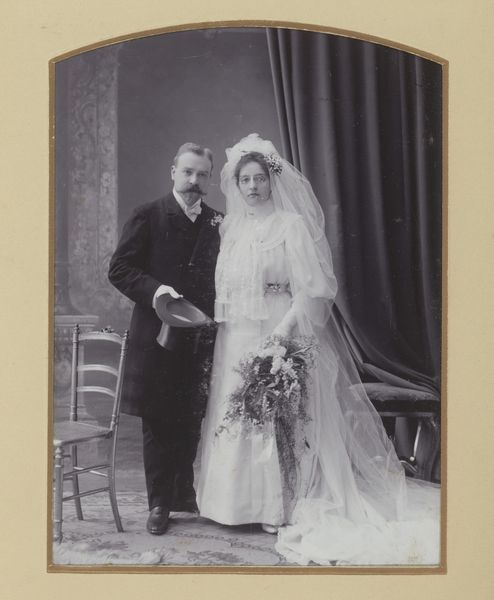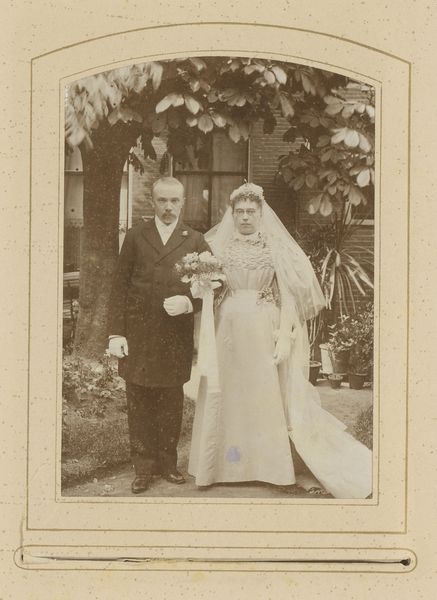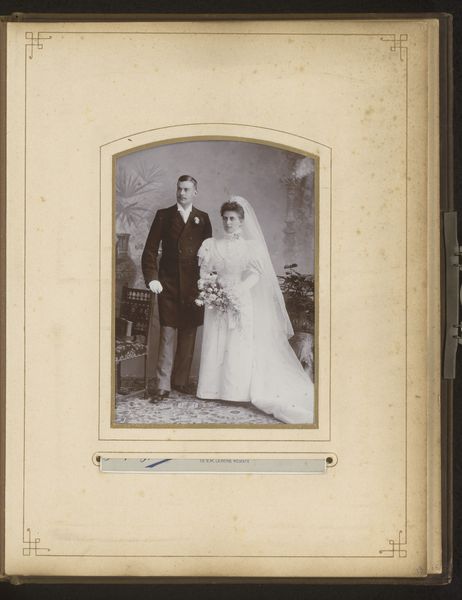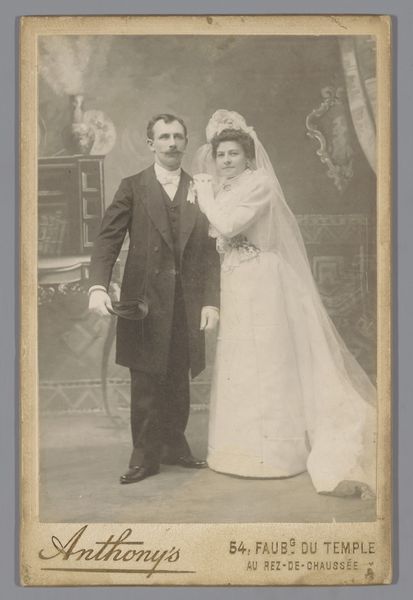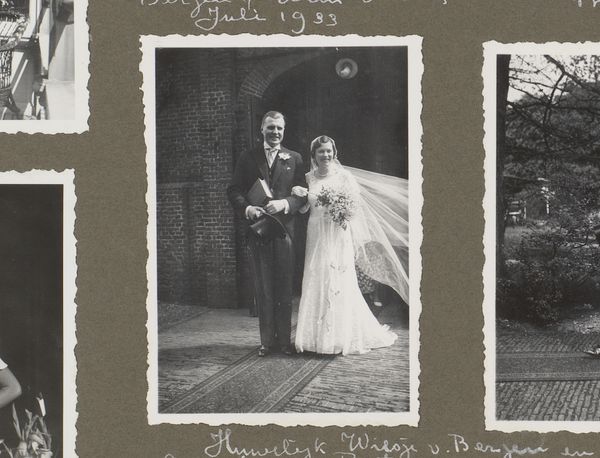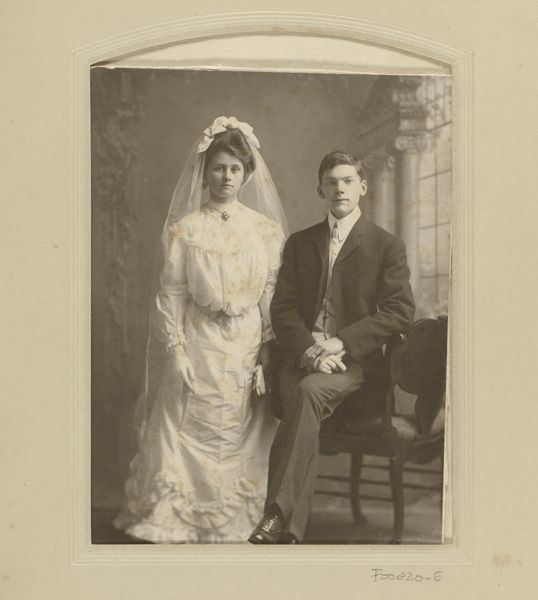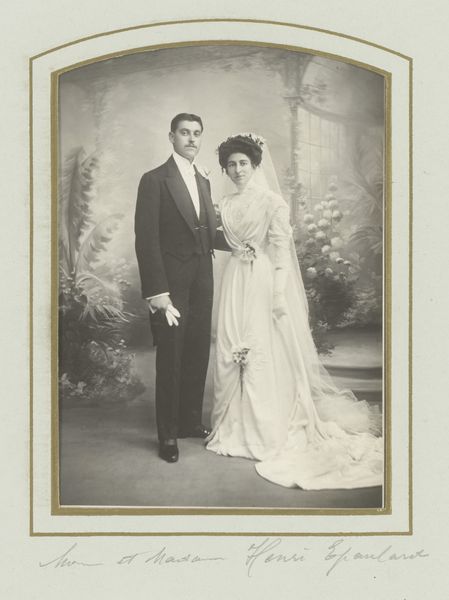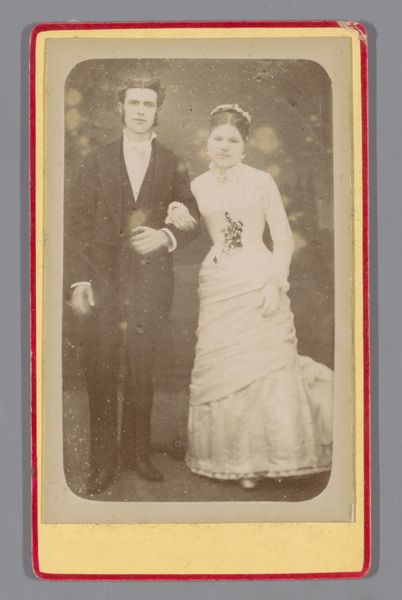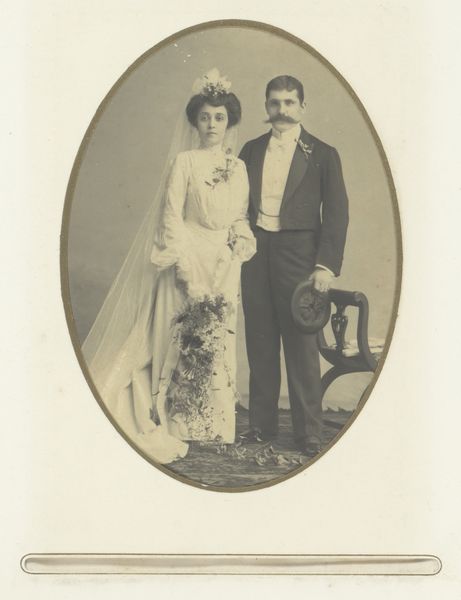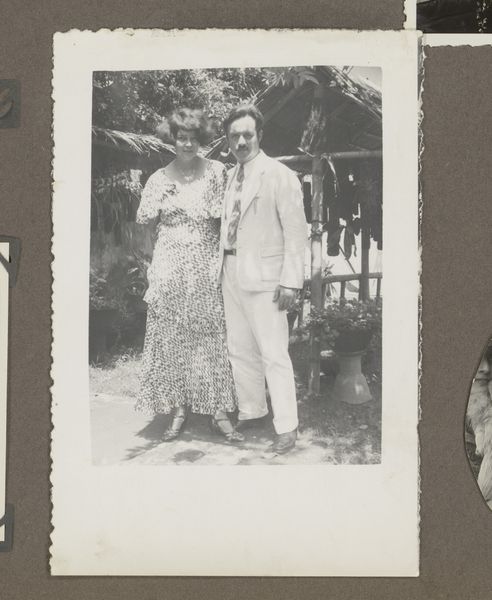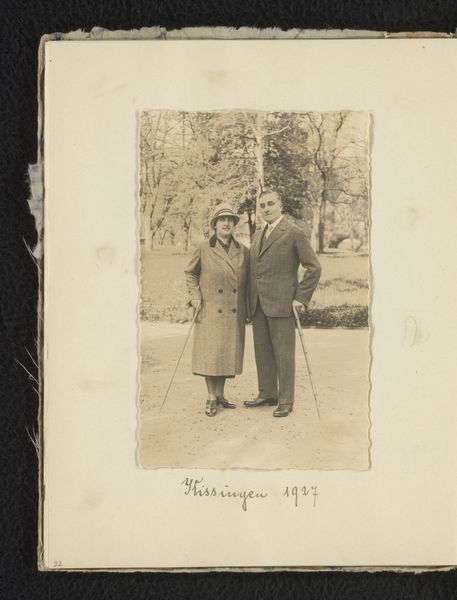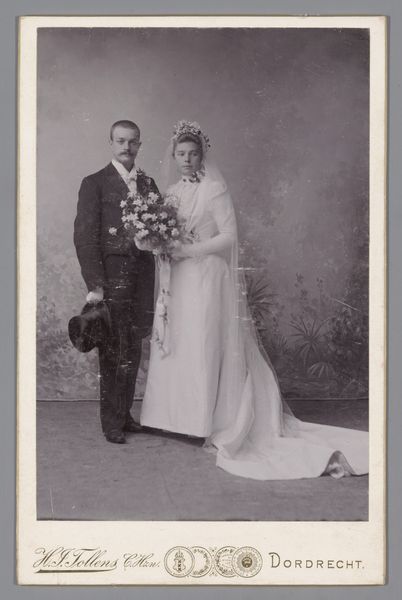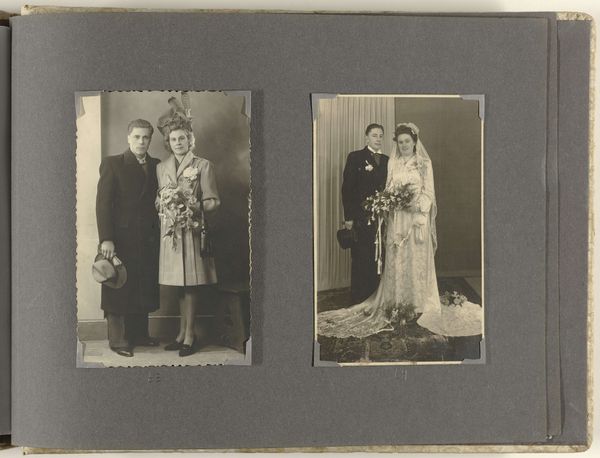
Dimensions: height 180 mm, width 131 mm, height 350 mm, width 220 mm
Copyright: Rijks Museum: Open Domain
Curator: This captivating photograph, entitled "Bruidspaar", or "Wedding Couple", dates to between 1929 and 1930. The artist remains anonymous. Editor: My first impression is one of a faded elegance. The monochrome palette gives it a timeless feel, but also, a certain emotional distance. The tight framing almost isolates the couple. Curator: Precisely! The photograph's formal structure compels our attention. Note the carefully balanced composition: the stark geometry of the building behind contrasts subtly with the soft textures of the bride’s tiered gown. It is also interesting to see how the textures create layers with tonal consistency. Editor: And look at the social context of the era. In the late 1920s, photography was becoming increasingly accessible. We see a democratization of portraiture, no longer confined to the elite. This photograph documents an intimate moment of union amidst the rapid social and technological changes of the interwar period. Curator: Indeed, that nascent accessibility shifts the very nature of photography, becoming almost instantaneous, capturing fleeting moments more spontaneously and with greater realism, which can certainly be said about this photo. Note how the lighting softly illuminates their faces, rendering visible every delicate detail and nuance. This contributes to the immediacy and emotional directness we've discussed. Editor: This couple likely wanted to preserve this moment to record their contribution to social continuity through their union, conforming to prevailing social expectations for marriage and social structure. Furthermore, one might explore the couple’s agency in presenting a carefully constructed self-image in the burgeoning culture of image consumption of the era. Curator: Well put. And in analyzing the composition and careful balancing of light, shadow, form, and tonality in its structure we discover an intriguing tension between the formality of a portrait and its informal accessibility due to the burgeoning social interest in photographic portraiture. Editor: Precisely! Understanding how an artwork serves as an artefact of broader societal narratives significantly enriches our understanding of culture and how cultural changes affected both the production of images as well as public views about how such photographs should represent social issues and practices such as marriage. Curator: A fitting synthesis to capture how this relatively simple black and white photograph nonetheless exemplifies sophisticated visual art qualities while opening dialogues concerning the nature of photography's evolving place in an increasingly modernizing society.
Comments
No comments
Be the first to comment and join the conversation on the ultimate creative platform.
